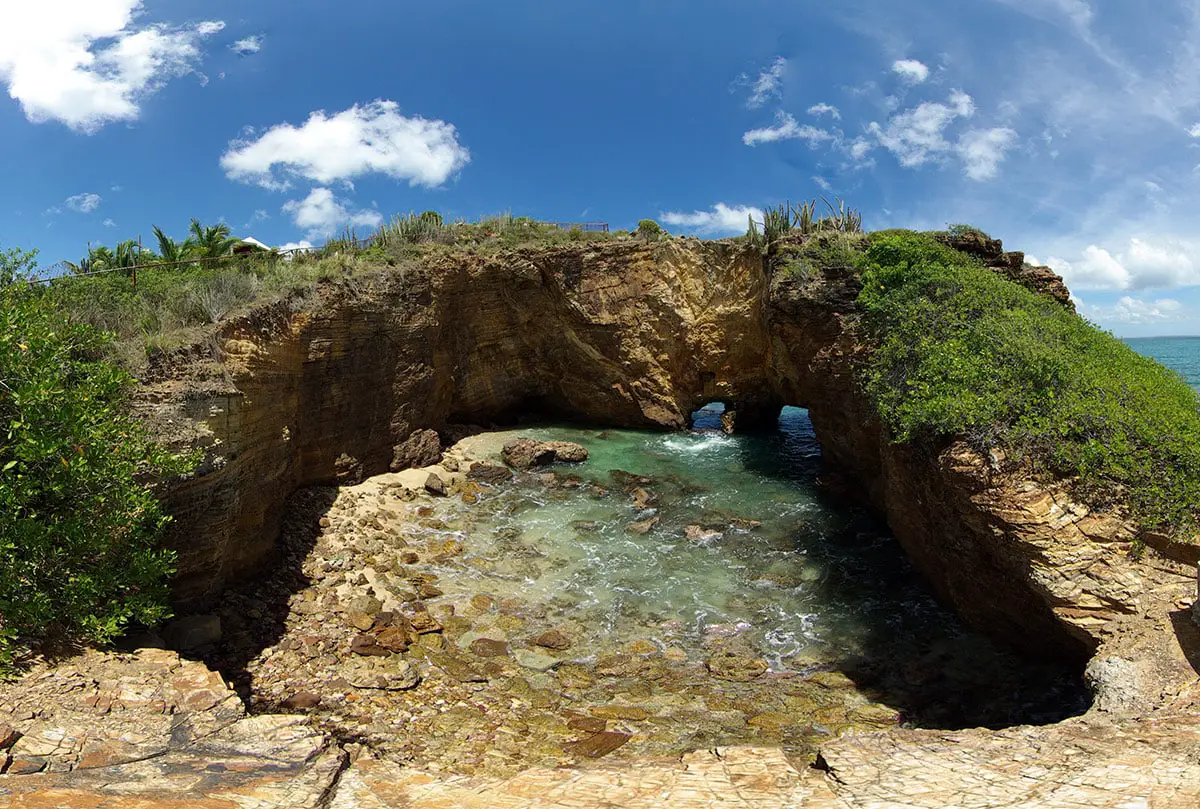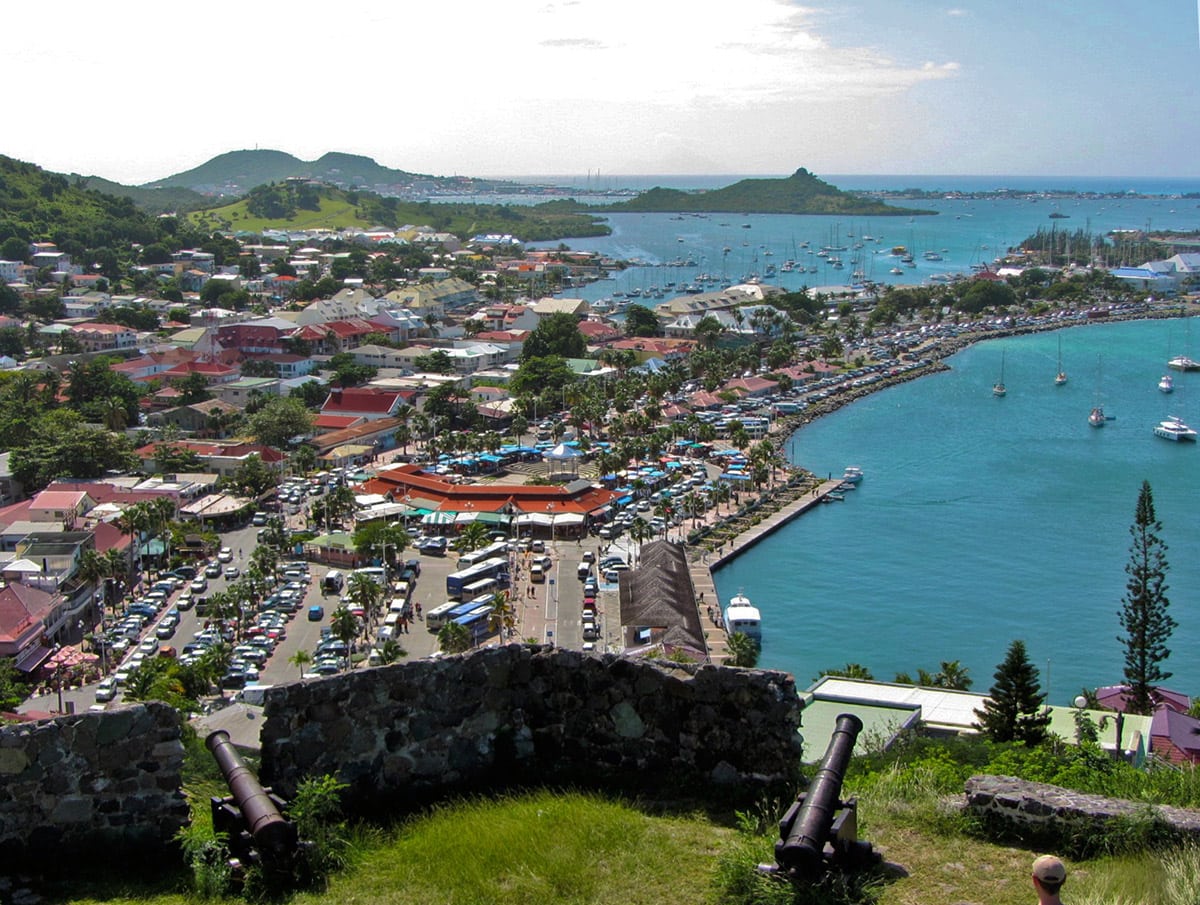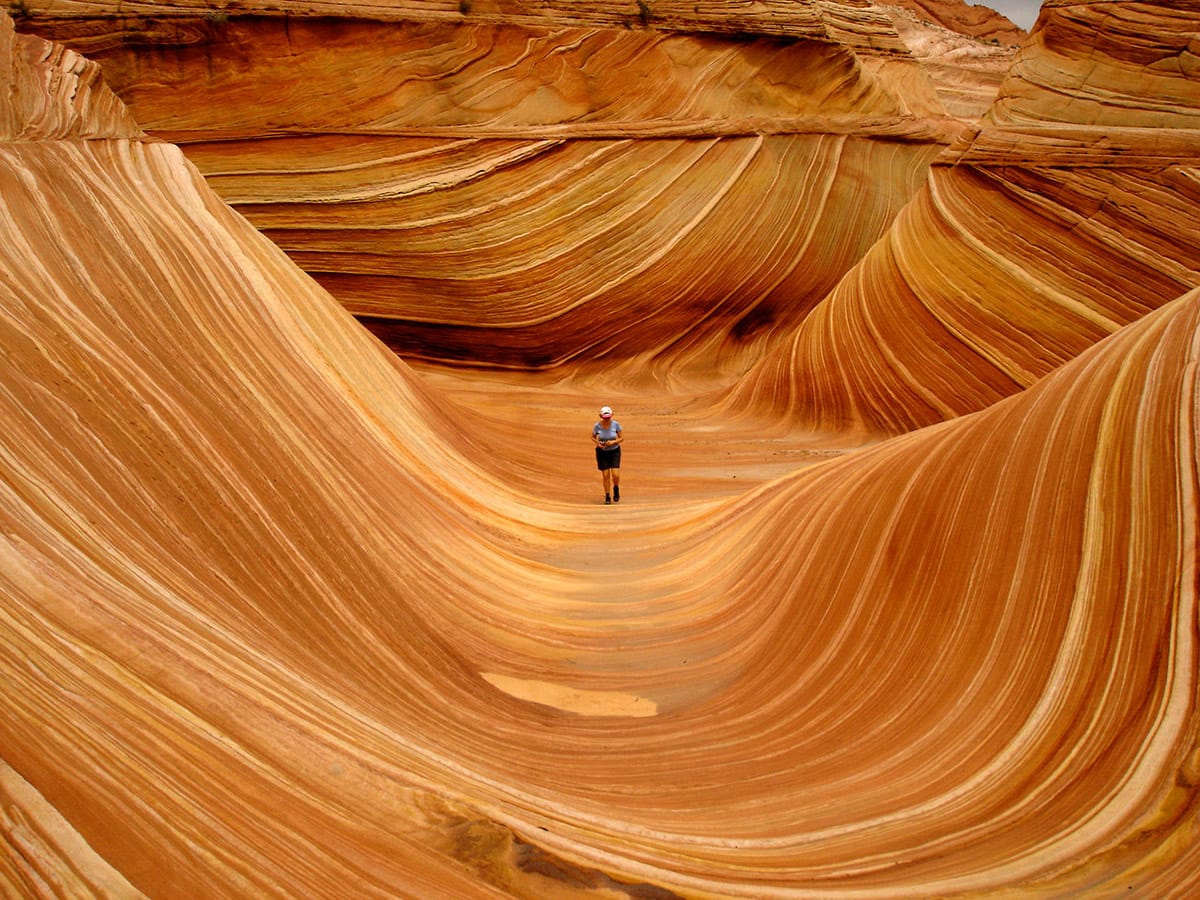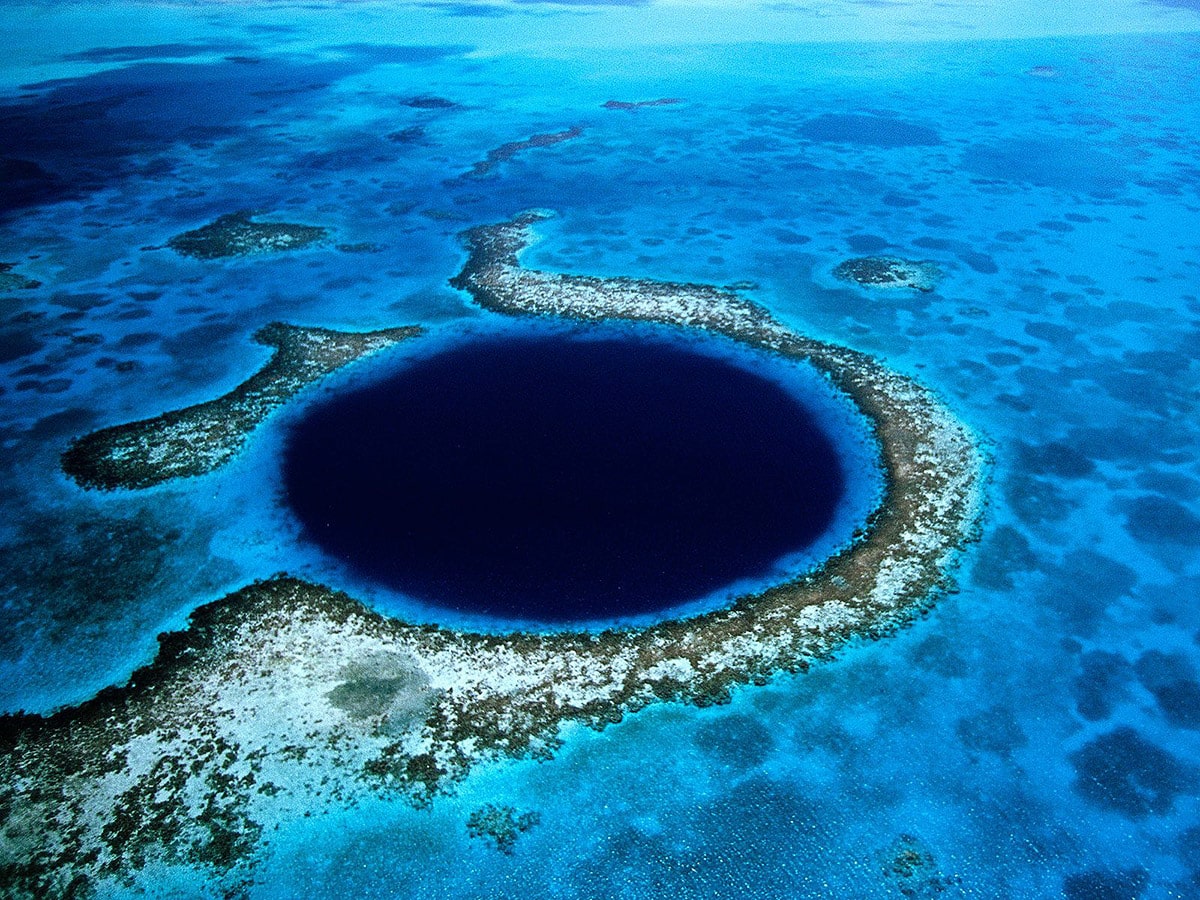World 🢖 North America 🢖 Caribbean 🢖 Saint Martin
Natural arches 🢔 Rock formations 🢔 Geological wonders 🢔 Categories of wonders
Wonder
Le Trou de David

 In short
In short
Until recent times one of most interesting natural landmarks in Saint Martin was Le Trou de David (originally – Trou du Diable). Unfortunately this magnificent sinkhole collapsed.
 37.8%
37.8%
GPS coordinates
Location, address
Alternate names
Depth
Map of the site
If you see this after your page is loaded completely, leafletJS files are missing.
 In detail
In detail
This natural hole was formed by a collapse of a large sea cave chamber. Le Trou de David was a hole with nearly vertical walls, with a diameter of some 25 m, some 10 m deep. It was divided from the sea with a narrow wall. There were two natural arches in this wall – one was deep enough to allow swimming in and out of the hole to the sea.
When the sea is rough, water in the hole seems to be boiling – hence the original name of the hole – Trou du Diable (Devil’s Hole).
On the walls of the sinkhole often were sitting large iguanas (Iguana iguana) – an invasive species. The reef outside the sinkhole is very interesting for snorkeling and diving – it has interesting rock formations and abundant sea life.
Nothing is forever. Natural arches at the sea are short-lived landmarks – sooner or later the support of the arches is destabilized by erosion. This happened with Le Trou de David as well – after heavy rains, it collapsed in the time period between November 29 and December 5, 2011.
References
- Le Trou de David. Les Fruit de Mer. Accessed on November 19, 2012.
- David’s Hole disappears. The Daily Herald.
 Linked articles
Linked articles

Wonders of Saint Martin
Saint Martin is an overseas collectivity of France. It occupies the northern part of a densely inhabited Caribbean island and, in spite of its small area, has diverse interesting landmarks.

Rock formations
This diverse and extremely interesting category of natural landmarks includes such landmarks as natural arches, balancing rocks, ravines, rock spires, and others. Many natural stone “sculptures” seem to defy gravity and other natural laws – but they exist!

Sinkholes
This category includes outstanding sinkholes – large natural depressions or holes, which for most the part represent collapsed caves.
